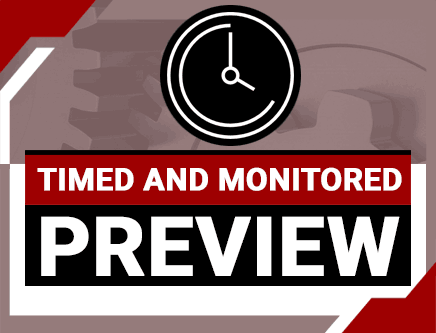An Ethical Analysis of Engineering Failures in History (Ohio Timed & Monitored Video)
Credit: 2 PDH
Subject Matter Expert: Thomas J. Green, P.E., CFM
In An Ethical Analysis of Engineering Failures in History , you'll learn ...
- What happened in the Tay Bridge Disaster of 1879 and why it matters to engineers
- What happened in the Great Boston Molasses Flood of 1919 and why it matters to engineers
- How to analyze situations and apply ethical criteria to engineering practices
Overview

To meet the Ohio Board's intent that online courses be "paced" by the provider, a timer will be used to record your study time. You will be unable to access the quiz until the required study time of 115 minutes has been met.
Credit: 2 PDH
Duration: 115 minutes
As stipulated in the National Society of Professional Engineers (NSPE) Code of Ethics, “Engineers, in the fulfillment of their professional duties, shall hold paramount the safety, health, and welfare of the public.” This fundamental canon of engineering ethics is perhaps so self-evident and obvious that it may seem unnecessary to quote it, but it isn’t difficult to locate examples from history where this basic rule has not been followed or upheld.
This course will help engineers understand the ethical relevance of several historical engineering failures. In particular, we will focus on three case studies: the Johnstown Flood of 1889 in Pennsylvania, Scotland’s Tay Bridge Disaster of 1879, and the Great Boston Molasses Flood of 1919. For each event, we will examine the construction history, discuss the causes and effects of the failure, consider possible design changes that might have prevented the failure, and then apply these aspects of the event to engineering ethics. The presentation incorporates maps, diagrams, and photos to help you visualize and learn the material, but we will not address specific design areas, such as structural load calculations.
This video is a recording of a live webinar training session. As a recording of a live event, you will hear the discussion that occurred between the instructor and those who attended this webinar.
Specific Knowledge or Skill Obtained
This course teaches the following specific knowledge and skills:
- Basic definitions of ethics and engineering ethics
- Fundamental canons of engineering ethics
- The Johnstown Flood of 1889: ethical analysis of what went wrong and how it could have been prevented
- The Tay Bridge Disaster of 1879: ethical analysis of what caused the bridge collapse and how it could have been prevented
- The Great Boston Molasses Flood of 1919: ethical analysis of what caused the storage tank to fail and how it could have been prevented
Certificate of Completion
You will be able to immediately print a certificate of completion after passing a multiple-choice quiz consisting of 10 questions. PDH credits are not awarded until the course is completed and quiz is passed.
| This course is applicable to professional engineers in: | ||
| Alabama (P.E.) | Alaska (P.E.) | Arkansas (P.E.) |
| Delaware (P.E.) | District of Columbia (P.E.) | Florida (P.E. Area of Practice) |
| Georgia (P.E.) | Idaho (P.E.) | Illinois (P.E.) |
| Illinois (S.E.) | Indiana (P.E.) | Iowa (P.E.) |
| Kansas (P.E.) | Kentucky (P.E.) | Louisiana (P.E.) |
| Maine (P.E.) | Maryland (P.E.) | Michigan (P.E.) |
| Minnesota (P.E.) | Mississippi (P.E.) | Missouri (P.E.) |
| Montana (P.E.) | Nebraska (P.E.) | Nevada (P.E.) |
| New Hampshire (P.E.) | New Jersey (P.E.) | New Mexico (P.E.) |
| New York (P.E.) | North Carolina (P.E.) | North Dakota (P.E.) |
| Ohio (P.E. Timed & Monitored) | Oklahoma (P.E.) | Oregon (P.E.) |
| Pennsylvania (P.E.) | South Carolina (P.E.) | South Dakota (P.E.) |
| Tennessee (P.E.) | Texas (P.E.) | Utah (P.E.) |
| Vermont (P.E.) | Virginia (P.E.) | West Virginia (P.E.) |
| Wisconsin (P.E.) | Wyoming (P.E.) | |


 Live support chat
Live support chat



